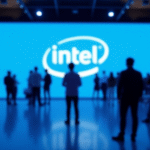Huawei’s Strategy for Latin America: Building a Regional Autonomous Technology Ecosystem
Mark Chen, President of Huawei Cloud Latin America, outlined the main technological trends shaping 2025 during his keynote speech at Huawei Cloud Compass 2025 in ShenZhen. The event, which showcases Huawei’s cloud computing advancements, took place from May 19 to 22.
Artificial Intelligence (AI)
Chen described AI as the most disruptive and urgent trend, calling it a “game-changer for all industries.” He highlighted its transversal application, from sales to technical support. Chen mentioned DeepSeek, a language model that reached 100 million users in just seven days, surpassing even OpenAI’s GPT-4.
Huawei has bet on a multi-model architecture, allowing integration of various language models (LLMs) and easy switching based on performance and costs. This, according to Chen, represents a new paradigm replacing the traditional multi-cloud concept with a focus on multiple model efficiency.
Huawei also unveiled computing advances, such as their AI supercomputer with 384 GPU cards, outperforming the latest Nvidia GPUs. The company’s strategy is to democratize AI through scalable solutions addressing specific industry needs.
Mainframe Modernization
Although less glamorous, mainframe dependency remains a significant issue. Chen noted that companies in Mexico and Brazil still operate substantial bases of these legacy systems, hindering digital agility.
Mainframe modernization or migration to native cloud architectures reduces costs and improves time-to-market. Huawei has identified this need across multiple regional industries, prioritizing it for the next two years.
Cloud Migration
Broadcom’s acquisition of VMware caused uncertainty among enterprise clients. Many now evaluate transferring workloads to public or private clouds for stability and control.
A similar situation arises with SAP users, who must migrate from ECC to SAP HANA by the end of 2027. This forced change has accelerated cloud service adoption, an area Huawei claims to have achieved 100% revenue growth in international markets over the past year.
Robust Data Architectures
AI cannot function without well-structured data. Chen emphasized that without a clear and classified data architecture, implementing effective AI solutions becomes impossible.
Huawei developed ModelArts, a platform acting as a single station for the entire AI development lifecycle, from data management to model deployment. The company also promotes “AI for Industry,” developing large sector-specific models in collaboration with clients and partners.
Talent Development and Local Ecosystem
Huawei not only focuses on infrastructure and software but also seeks knowledge transfer. In China, the company has collaborated with universities, startups, and governments to cultivate AI talent. Now, they aim to replicate this model in Latin America.
Chen mentioned that this capacity transfer is crucial for countries like Mexico, Brazil, and Colombia to develop their digital ecosystems, including technical education, regional lab and data center creation.
Huawei’s proposal goes beyond exporting technology from Asia; it adapts solutions and knowledge to the Latin American environment.
Key Questions and Answers
- What are the key technological trends Huawei predicts for Latin America by 2025? The trends include Artificial Intelligence (AI), mainframe modernization, cloud migration, robust data architectures, and talent development with a local ecosystem.
- Why is AI considered the most disruptive and urgent trend by Huawei? Chen described AI as a “game-changer for all industries,” with its transversal application from sales to technical support, and highlighted Huawei’s multi-model architecture approach.
- What challenges does mainframe dependency pose for Latin American companies? Despite being less glamorous, mainframe dependency remains significant. Companies in Mexico and Brazil still operate substantial legacy system bases, hindering digital agility.
- How is Huawei addressing cloud migration concerns among enterprise clients? Following Broadcom’s acquisition of VMware, many clients evaluate transferring workloads to public or private clouds for stability and control.
- What role does data architecture play in implementing effective AI solutions? Without a clear and classified data architecture, Chen emphasized that implementing effective AI solutions becomes impossible.
- How is Huawei fostering a local digital ecosystem in Latin America? Huawei aims to transfer knowledge and cultivate AI talent, replicating their successful model in China. They also promote adapting solutions and knowledge to the Latin American environment.






